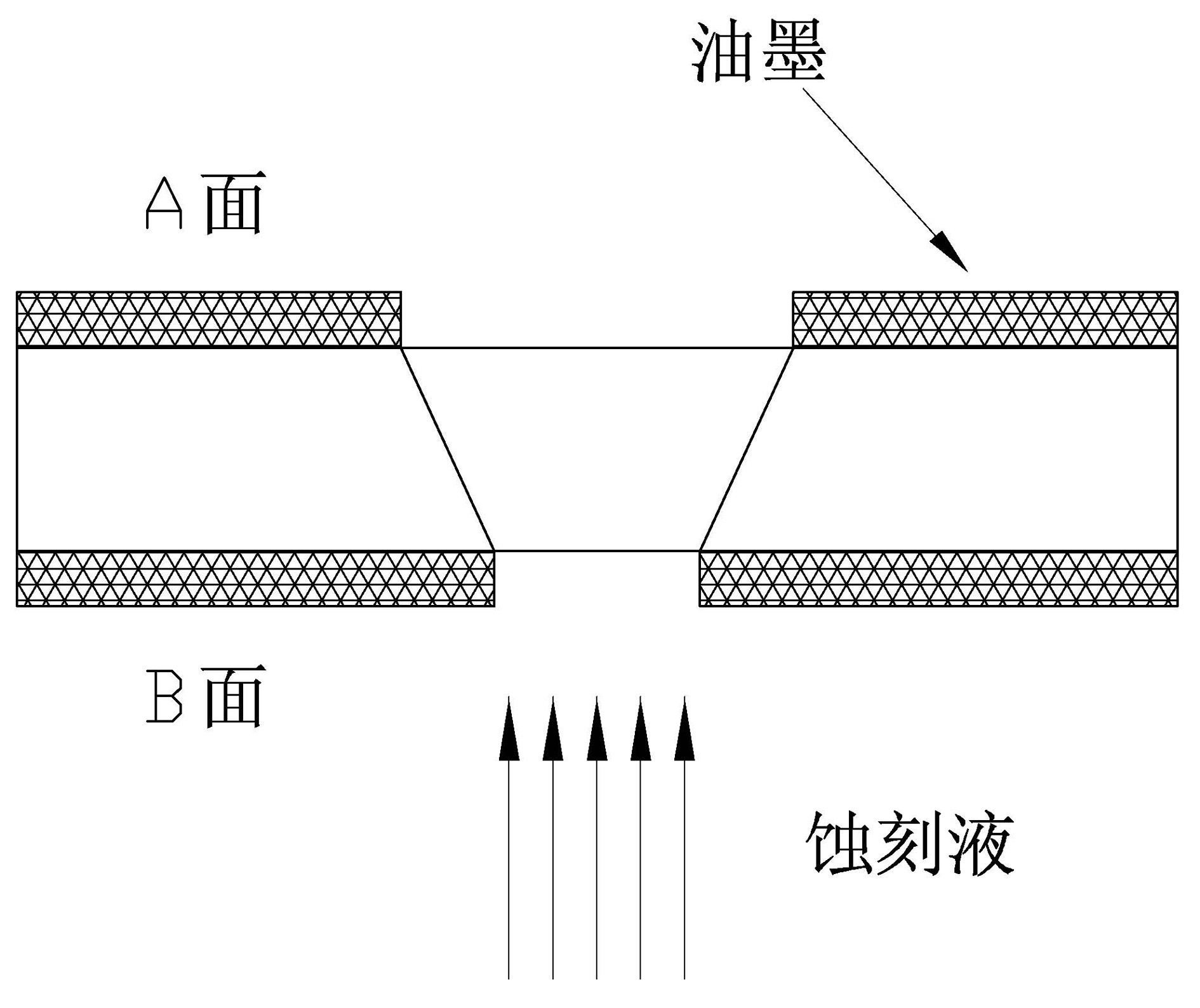Etching method of metal micro-holes
An etching and micro-hole technology, used in metal processing equipment, laser welding equipment, manufacturing tools, etc., can solve the problems of application limitations, excessive fronts, and large equipment investment, so as to reduce the loss of resources, expand the scope of application, and improve the The effect of machining accuracy
- Summary
- Abstract
- Description
- Claims
- Application Information
AI Technical Summary
Problems solved by technology
Method used
Image
Examples
Embodiment Construction
[0027] The present invention will be described in further detail below in conjunction with accompanying drawing and embodiment:
[0028] see figure 1 As shown, the metal micropore etching method includes the following processing steps:
[0029] Process 1, oil spraying, uniformly spray a layer of black photosensitive ink layer on the metal workpiece, the thickness of the oil spraying is the minimum requirement that the ink layer does not fall off after laser perforation;
[0030] Process 2, laser laser perforation, using laser to perforate the metal workpiece, the perforation aperture is smaller than the final forming aperture; the laser energy is subject to not destroying the ink coating,
[0031] Since the laser drilling is trumpet-shaped, it cannot be formed according to the required aperture diameter. The purpose of the laser laser is to perforate, and then the subsequent chemical etching is used to correct the aperture requirement;
[0032] Step 3, chemical etching, uses...
PUM
| Property | Measurement | Unit |
|---|---|---|
| thickness | aaaaa | aaaaa |
| diameter | aaaaa | aaaaa |
| diameter | aaaaa | aaaaa |
Abstract
Description
Claims
Application Information
 Login to View More
Login to View More - R&D
- Intellectual Property
- Life Sciences
- Materials
- Tech Scout
- Unparalleled Data Quality
- Higher Quality Content
- 60% Fewer Hallucinations
Browse by: Latest US Patents, China's latest patents, Technical Efficacy Thesaurus, Application Domain, Technology Topic, Popular Technical Reports.
© 2025 PatSnap. All rights reserved.Legal|Privacy policy|Modern Slavery Act Transparency Statement|Sitemap|About US| Contact US: help@patsnap.com



